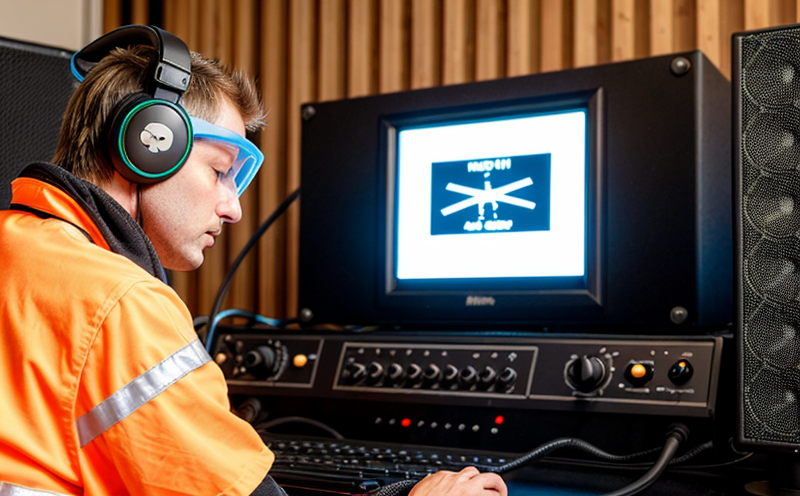ASTM F963 Close-to-Ear Toy Sound Safety Test
The ASTM F963 standard covers safety requirements for toys intended for use by children. One critical aspect of this standard is the close-to-ear sound test, which ensures that toys do not produce harmful noise levels when brought to a child's ear. This section outlines the detailed steps involved in conducting the close-to-ear sound safety test as per ASTM F963.
The primary goal of this test is to evaluate whether toy sounds are within safe limits and do not pose any risk of hearing damage or discomfort for children. The test focuses on toys that can be held close to a child's ear, such as musical instruments, walkie-talkies, or even certain soft toys with speakers.
The testing process involves several steps which include preparing the toy specimen, conducting the test using specific instrumentation, and analyzing the results against ASTM F963 standards. The test is conducted in a controlled environment where the sound pressure level (SPL) at close proximity to the ear of a child is measured.
The ASTM F963 standard specifies that toys should not generate an SPL greater than 85 dBA when brought within a certain distance from the child's ear. This limit ensures that children are protected from potential hearing damage and discomfort caused by excessive noise levels.
During the test, the toy is placed in a specific position close to the ear canal of a dummy head designed to simulate the anatomy of a 6-year-old child. The testing apparatus includes a sound level meter and an artificial ear that can accurately measure SPLs at various frequencies.
The specimen preparation involves ensuring that the toy is clean, free from any foreign materials or debris, and in its intended use condition as specified by ASTM F963. This ensures that the test results are representative of real-world conditions when children play with these toys.
Once the specimen is prepared, it is placed close to the ear canal of the dummy head. The testing apparatus then records the SPL at various frequencies and compares the measurements against the ASTM F963 limits. This process is repeated for different types of toys to ensure consistency in results.
The data collected during the test is analyzed using statistical methods to determine compliance with the ASTM F963 standard. If any toy fails to meet the specified SPL limit, further investigation and corrective actions are required before the toy can be considered safe for use by children.
| Frequency Band | SPL Limit (dBA) |
|---|---|
| 250 Hz to 8 kHz | 85 dBA |
Environmental and Sustainability Contributions
- Reducing noise pollution by ensuring toys are safe for close-to-ear use.
- Promoting safer play environments for children, contributing to healthier development.
- Encouraging manufacturers to design quieter toys which can lead to reduced energy consumption in production processes.
Competitive Advantage and Market Impact
Meeting the stringent requirements of ASTM F963 ensures that a toy manufacturer's products are not only safe but also comply with international standards. This can provide a significant competitive advantage in the market as consumers increasingly prioritize safety and quality in their purchases.
Compliance with this standard can lead to increased trust among parents, which is crucial for brand reputation and loyalty. It also opens up opportunities for exporting toys internationally, where compliance with local standards is often mandatory.
In addition, the process of ensuring toy safety through ASTM F963 testing can streamline production processes and reduce recalls, thereby saving costs associated with product liability and customer dissatisfaction.
Use Cases and Application Examples
- Testing musical instruments that may be held close to the ear during play.
- Assessing walkie-talkies or other communication devices designed for children's use.
- Evaluating toys with speakers, such as educational gadgets or interactive toys.
The ASTM F963 close-to-ear sound safety test is particularly important for manufacturers of toys that are intended to be held close to the ear. This includes a wide range of products such as walkie-talkies, musical instruments, and even certain soft toys with embedded speakers.
For instance, a manufacturer of a walkie-talkie designed for children would need to ensure that it does not produce excessive noise levels when brought close to the ear. The testing process involves placing the toy in a specific position relative to the dummy head and measuring the sound pressure level at various frequencies.
The same principle applies to musical instruments such as flutes or trumpets, which can produce high SPLs if held too close to the ear. By conducting this test, manufacturers can ensure that their products meet the safety requirements set forth by ASTM F963 and are safe for children's use.





